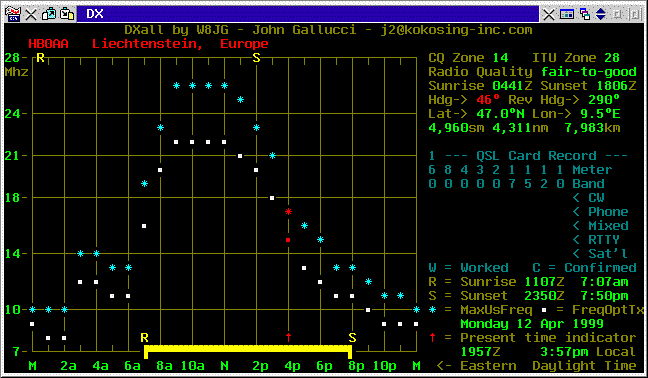BeaconTime by W8JGFor those of you who use the OS/2 operating system, BeaconTime, an OS/2 program written by John Gallucci, W8JG, can be obtained by sending e-mail to John at j2@kokosing-inc.com requesting a copy of BeaconTime. Bob Wilson, N6TV, uses BeaconTime under OS/2 and says it works well. The Program was written in REXX and compiled. It shows all five bands at the same time, so that it is not necessary to switch the program from band to band. It gives the sunrise and sunset times at your location and at all the beacon locations. It also gives the distance to the beacon in statue miles, nautical miles or kilometers. Callsigns of beacons not transmitting on a particular frequency are grayed out. Short path and long path beam headings are displayed. Possible grayline paths are indicated. The user can update the beacon database easily using a text editor. Originally, you must enter your latitude, longitude and time differential from Greenwich Mean Time in the database file. It is not necessary to further edit the database file except when a beacon changes its transmitting schedule. The program knows when it is time to change from standard time to daylight savings time and back again. John has also written
another OS/2 program called DXall to use while DXing. He says when you
hear a call, type in the callsign and a screen full of useful information
appears. He says, "If you type in the callsign LU2XAR, you will
get the correct beam heading for this station in Santa Cruz Province,
Argentina. The first letter of the suffix of LU call tells which province
it is. Another example is SM7LRE is in Malmohus County, Sweden. The
7L is the key in SM7LRE. The program automatically updates itself every
minute. The MUF prediction graph is very useful when DXing." I
have included a screenshot of the program at the end of the page. If
you would like to try the program, contact John directly at j2@kokosing-inc.com. (Review by N6EK)  |